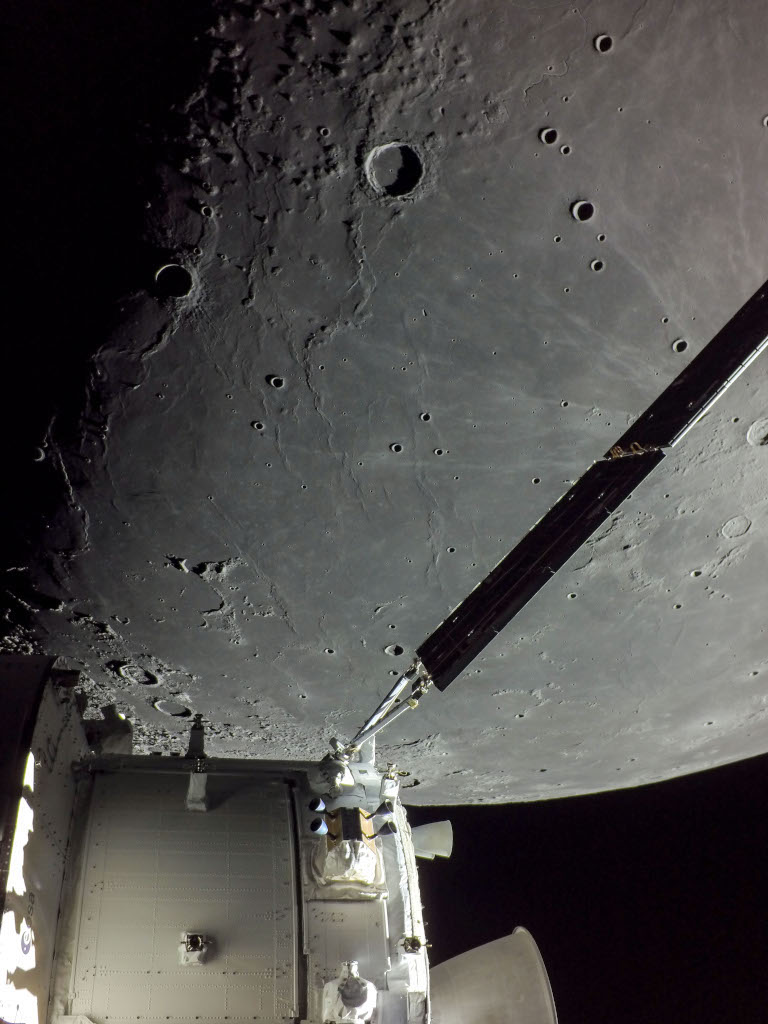2022年12月8日
Orion and the Ocean of Storms
Image Credit: NASA, Artemis 1
Explanation: A camera on board the uncrewed Orion spacecraft captured this view on December 5 as Orion approached its return powered flyby of the Moon. Below one of Orion’s extended solar arrays lies dark, smooth, terrain along the western edge of the Oceanus Procellarum. Prominent on the lunar nearside Oceanus Procellarum, the Ocean of Storms, is the largest of the Moon’s lava-flooded maria. The lunar terminator, shadow line between lunar night and day, runs along the left of the frame. The 41 kilometer diameter crater Marius is top center, with ray crater Kepler peeking in at the edge, just right of the solar array wing. Kepler’s bright rays extend to the north and west, reaching the dark-floored Marius. Of course the Orion spacecraft is now headed toward a December 11 splashdown in planet Earth’s water-flooded Pacific Ocean.
Tomorrow’s picture: pixels in space
猎户座与风暴洋
图像提供: NASA,Artemis 1
说明: 12月5日在返程以自主动力飞越月亮之时,未携带乘员的猎户座飞船的相机拍下了这片景观。在猎户号的一扇开展之太阳能板下方,可见到座落在风暴洋西缘的大片黝黑平坦原野。这片位在月球正面风暴洋里的平野,是月亮最大的岩浆覆盖月海。图像中,分隔明亮白画与黑夜的月球明暗交界线从左侧划过。中上方有宽41公里的马吕斯坑(crater Marius),而带着辐线的开普勒坑,隐约出现在太阳能板右侧的月表上。开普勒坑的明亮辐线向北及向西伸展,远及黝黑的马吕斯坑。猎户座飞船目前正在返回地球,预定在12月11日降落在覆盖着大量海水的太平洋面。
明日的图片: pixels in space



